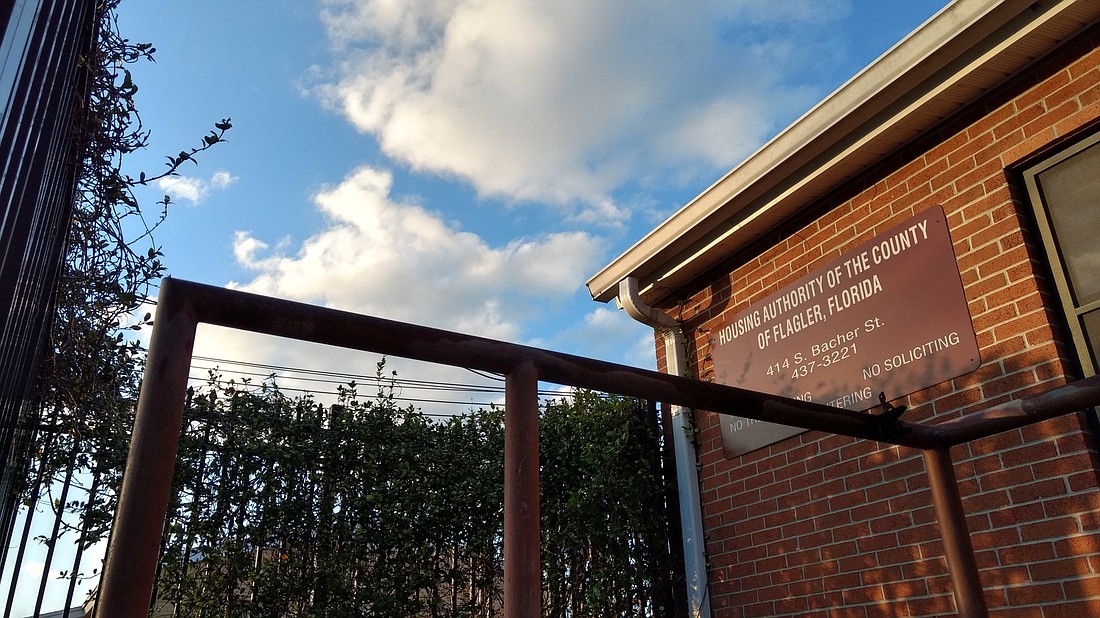- January 1, 2025
-
-
Loading

Loading

As I walked along Bacher Street in Bunnell on a cool evening last week, with the sun drawing long shadows outside the Housing Authority office, I became aware that I was an outsider — a white guy walking around a black neighborhood.
This is one of my least favorite sensations because I like to think that we are living in a post-racial society in which Martin Luther King’s dream has been realized, a place where little children play with each other and their race is an afterthought.
But race seemed to lead the conversations I had with people in the neighborhood that day.
On a porch across the way, a woman hollered in my direction, asking, “You HUD?”
I was in her territory. I was wandering around taking pictures. I was suspicious.
I walked across the lawn and introduced myself. No, I told her, I’m not HUD but merely a newspaper reporter. I explained that I was hoping to take a photo for the Palm Coast Observer for a story we were planning to publish about the lack of affordable housing in Flagler County (which we did in the March 16 edition). The woman, who declined to tell me her name, thought it was a great idea to draw attention to the problem, but she was skeptical. What difference would it make to write a newspaper story?
She was friendly but declined to let me take a picture of her home, so I walked down a couple more streets. I saw a vibrant community, people of all ages enjoying the weather, a basketball hoop with a torn net, a barrel-sized wire cage full of aluminum cans, music blaring from competing car stereos.
I met a man sitting on his porch outside his apartment. He looked about 45 years old, a tall man with broad shoulders and bright white teeth. I asked if it was OK for me to take photos of the apartments near where he lived.
“Sure, you can do whatever you want,” he said.
“Well, I just don’t want to make anyone uncomfortable, walking around, taking pictures.”
“You could be the police,” he said.
“Nope, not the police, just a newspaper reporter.”
Again, I was mistaken for someone in authority, ostensibly just because I was white.
“You could be anything,” he said.
“And you couldn’t?”
“No, I couldn’t. You could, but I couldn’t.”
“Just because I’m white and you’re black?” I said.
“You can go as far as your education will take you.”
I sat next to him and talked for a few minutes, and I took the photo that would appear on the front page of the March 16 edition, a row of apartments with window air-conditioning units jutting over plastic lawn chairs. It’s a picture of “the projects” in Bunnell — a place I assume many people in Palm Coast don’t know exists.
In the days since, I’ve thought a lot about those few moments with the man on the porch. He was not under the illusion that we were in a post-racial society. Because, while Martin Luther King’s dream of integration has been achieved as far as the courts are concerned, the American dream of upward mobility, of hard work resulting in economic opportunity regardless of race, was something this man had lost faith in, if he ever had it.
Maybe some are tempted to lecture this man, and maybe he deserves it. What opportunities had he already squandered in his life? What effort was he making to improve his situation now?
The brief exchange I had with him didn’t answer those questions. But it did serve to identify another question to which, if we could find an answer, could change a lot of lives in public housing: How can we help this man believe in the American dream again?